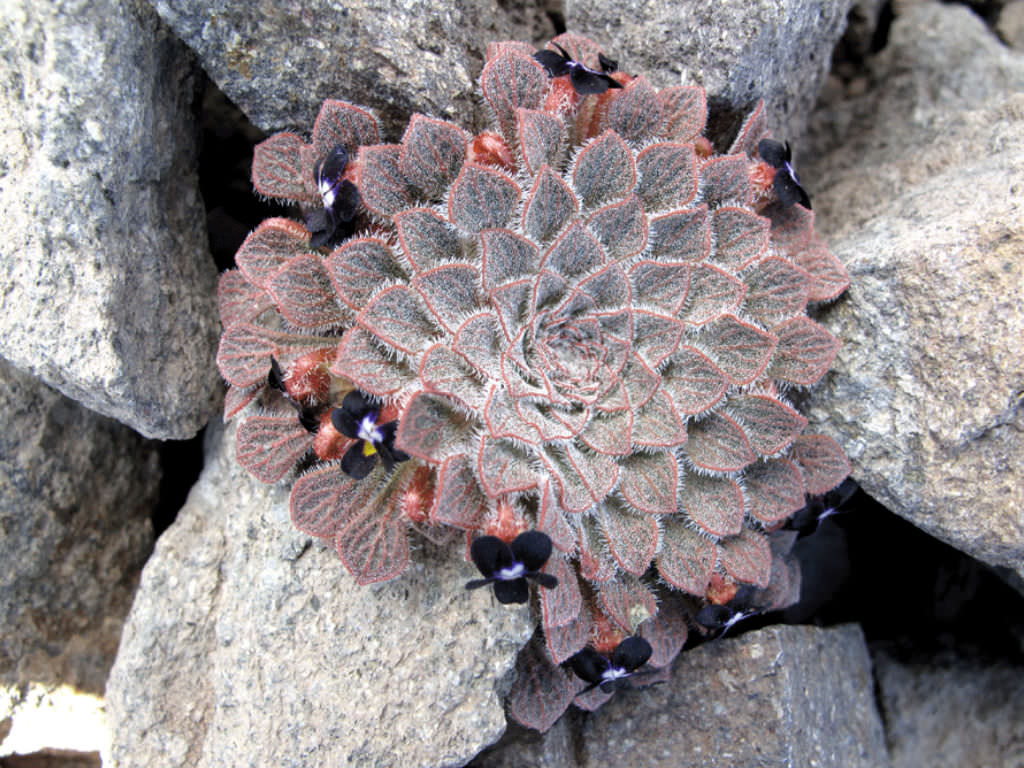Scientific Name
Viola montagnei Gay
Synonym(s)
Viola flos-mariae, Viola flos-mariae var. nivea, Viola flos-mariae var. virescens
Scientific Classification
Family: Violaceae
Subfamily: Violoideae
Tribe: Violeae
Genus: Viola
Origin
This species is native to Argentina and Chile.
Description
Viola montagnei is an attractive stemless perennial plant that forms rosettes of green semi-succulent leaves with reddish midrib, veins, and margins. It belongs to the group of Rosulate Violas. Leaves are covered with short soft hair and have margins fringed with long white hairs. Flowers have 5 dark purple petals, 4 with white bases, and the lower one yellow. They appear from spring to early summer and stand in a ring around the outer edge of the rosette.
Etymology
The specific epithet "montagnei" probably honors Jean Pierre François Camille Montagne (1784-1866), French botanist, bryologist, and mycologist.

How to Grow and Care for Viola montagnei
Rosulate Violas have a reputation for being difficult to keep alive. Therefore, cold conditions, soil containing adequate nutrients, and as much light as possible are essential.
Soil: They grow in relatively bare loose soils, often volcanic in origin.
Hardiness: Viola montagnei can withstand temperatures as low as 0 to 50 °F (-17.8 to 10 °C), USDA hardiness zones 7a to 11b.
Propagation: Rosulate Violas are grown only from seed and with some patience.
The main problem with these plants is etiolation, caused by a lack of light, which results in elongation of the compact rosettes. However, it is known that in any bunch of seedlings, some of them will quickly etiolate, while others may not. So there is some scope in selecting Rosulate Violas more likely to grow satisfactorily in cultivation.
Learn more at How to Grow and Care for Rosulate Violas.
Toxicity of Viola montagnei
Violas are nontoxic for humans and pets. Both the flowers and leaves are edible fresh, cooked, or dried.
Links
- Back to genus Viola
- Succupedia: Browse succulents by Scientific Name, Common Name, Genus, Family, USDA Hardiness Zone, Origin, or cacti by Genus
Photo Gallery
Click on a photo to see a larger version.



